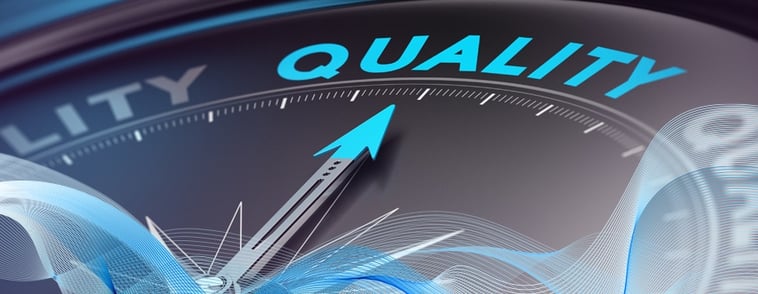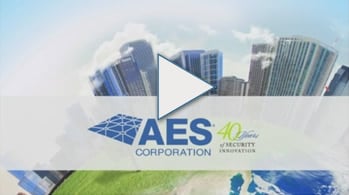Subscriber Installation
Performing a quality installation will ensure optimal performance of your AES-IntelliNet® mesh radio network. It will also provide the scalability necessary to rapidly grow your network and increase its resiliency. A comprehensive pre-installation AES Site Survey will equip the installer with valuable insight about the installation site. The site survey will reveal useful information such as:
- Building construction information (whether the building is wood, concrete, metal, etc.)
- Information about the distance from the Fire Alarm Control Panel (FACP), mounting location, etc. (this information is useful in estimating the amount of cabling, conduit, and wiring that will be necessary to complete the installation)
- Network Connectivity (NetCon) at the site, meaning where in the building peak Radio Frequency (RF) performance be achieved.
1. Preparation is Everything
As quoted by Elbert Green Hubbard, “The best preparation for good work tomorrow is to do good work today.” Before dispatching to the site, the technician should prepare the following supplies:
- Drill with assorted drill bit including screw tips
- Electrical connectors and grommets
- Electrical hand tools
- External antennas and mounting hardware
- Ladder
- Lighting protector
- Measuring tape
- Multi-meter
- Spare transceiver
- Steel fish tape
- Subscriber unit, hand held programmer, AC transformer and enclosure, and battery
- Various lengths of conduit
- Up to 25’ of RG-58 cable and 75’ of RG-8 cable along with various BNC and Z
Type N connectors - Watt Meter
- Wire spools
2. Have your ID Ready and Call Ahead
The technician should also be supplied with the Account ID (this is a unique four character hexadecimal code used as an identifier for all subscribers) and Cipher Code (this is a unique four character hexadecimal code used by all subscribers, the Cipher Code is similar to a password or key for a network) prior to arriving on site.
The Central Monitoring Station should be made aware of the installation in advance so that they are prepared and aware of the new signals that will be generated from the subscriber that is
being installed.
3. Double Check
When arriving on site, the Network Connectivity (NetCon) value should be verified again.
- Power the subscriber up using AC power (alternatively you may use a small battery,
do not use a 7.5Ah or greater battery for initial power up) - Program the Account ID and Cipher Code into the subscriber, allow the subscriber time
(up to 5 minutes) to build its routing table - After 5 minutes, verify the NetCon status by pressing the Shift and F4 key on the
Handheld Programmer - If a NetCon 5 is not displayed, you may need to remove the rubber duck antenna and install a larger external antenna (remember to power down the unit before disconnecting the antenna, otherwise you risk damaging the transceiver)
- If a larger antenna is needed to achieve a NetCon 5 outside the building, then you will likely need to install an external antenna (at this point, you will need to assess the building design and layout in order to consider the mounting options for an external antenna)
4. Going on Location
You should consider where the antenna will be mounted, if building penetration and physical protection is required, and the elements of mounting location. When using an external antenna, it is important to be aware of the cable length limitations when considering the permanent mounting location of the subscriber. The maximum distance for RG-58 cable is 25’ from the subscriber to the antenna, including the lightning protector. The maximum distance on RG-8 is 75’. LMR-400 can be used up to 125’ and will need the specific terminations for that cable.
When installing an external antenna, the following recommended guidelines and AES Best Practices should be followed:
- The antenna is mounted at least 18” above the roof line
- The antenna is at least 10” away from any parapet, wall, or obstruction
- The antenna should have 360º visibility
- The antenna must be plumb when mounted
- The antenna, and its elements, must be physically protected and weatherproofed
5. Now You May Proceed
After achieving a NetCon 5 reading, you may now proceed inside to the installation location. Upon arriving at the interior location where the subscriber will be installed, you must again verify the NetCon value allowing the subscriber several minutes to adjust to the change in location. You should be aware of the building construction when performing this verification test. Buildings constructed of mostly wood experience better RF performance than those constructed of steel or concrete. Similarly, you should be observant of the room where the subscriber will be installed in. Electrical, HVAC, and mechanical rooms often contain a lot of metal (conduit, duct work, etc.). This will negatively impact the RF performance and may prevent the subscriber from achieving a NetCon 5 value. If a NetCon of 5 is achieved, then proceed with the permanent installation of the subscriber. If a NetCon 5 is not achieved, temporarily mount the subscriber and begin testing with alternative antennas. AES Corporation recommends testing with the 7211 Stealth Antenna first. However, if the exterior testing revealed the need for a larger external antenna, then proceed using that antenna.
6. If You Think Compliance is Expensive, Try Non-Compliance
~Former U.S. Deputy Attorney General Paul McNulty
When permanently installing the subscriber, be sure to comply with all local and national regulations such as the National Electric Code (NEC) and the National Fire Alarm and Signaling Code (NFPA). After permanently mounting the subscriber and protecting its elements, you may begin the subscriber programming process.
For more on programming, view our AES Training Academy ‘7788F Subscriber Programming’ video.
When in doubt or need an answer to a question, always seek professional advice. Our Support team of alarm industry experts are available Monday through Friday from 8am to 8pm EST and 24/7 for emergency IP Link and AES-MultiNet Receiver down situations.
aes-corp.com | dealer login | (866) 237-3693 | support@aes-corp.com


